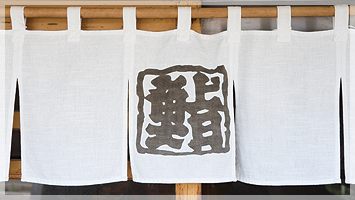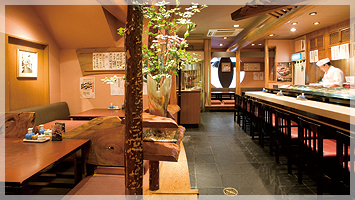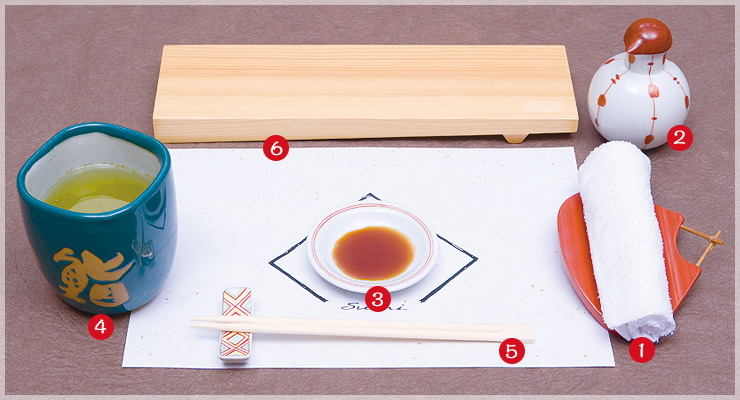
Look for a sign or curtain (noren) that says "sushi" in Japanese. Or look for the "SUSHI RESTAURANT" sticker widely used throughout Niigata. There are at least three different ways to write sushi in Japanese—"すし", "寿司" and "鮨"—so keep your eyes open.

If you sit at the sushi bar, you will be able to watch the sushi chefs prepare the food, and you can view the varieties of fish and other ingredients lined up in the glass cases in front of you. If you prefer a more private and relaxing experience, you can sit on tatami mats at a Japanese-style table. Your host will guide you according to your wishes and the number in your party. You may want to state your preference in advance when making a reservation.
 |
 |
 |

This is a wet towel that may be hot or cold which is used for wiping your hands and face. You may wish to use it repeatedly if you are eating your sushi with your fingers.
Pour some soy sauce from the jar into your little soy-sauce dish, and then dip the sushi into the dish before eating it. Pour out only a small amount, and then add more when you run out.
This small dish, about 10 cm (4 inches) in diameter, is used for holding your soy sauce. Pour in a small amount of sauce form the soy-sauce jar, and then dip pieces as desired before eating. Note that not all sushi pieces require soy sauce; a few types come with their own special sauce, others may use salt, and still others should be eaten with no additional flavorings.
This powdered green tea, which is served hot, has a subtle aroma that does not overwhelm the delicate taste of the sushi. It refreshes the tongue and brings out residual flavors.
Some shops provide disposable chopsticks known as waribashi which come fused together and are broken apart before being used. Feel free to eat sushi with your hands, however; it's a true finger food.
These are small wooden trays on which sushi pieces are served. Not all shops use these; some set the sushi on leaves or on plates.
Niigata sushi quotient life hygiene trade association
TEL.+81-25-246-3020 FAX.+81-25-246-3030
Copyright (c) 2008 Niigata_Kiwami. All rights reserved.







